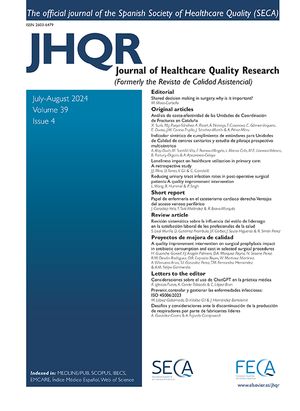La reingeniería de procesos se define como volver a reinventar la manera de organizarse para conseguir avances sin precedentes en la calidad. Este artículo resume los resultados tras cuatro años de aplicar esta técnica al proceso de analgesia epidural en el parto.
Material y métodosDescribimos el nuevo diseño del proceso de analgesia epidural obstétrica (AEO). Evaluamos el grado de su implantación mediante las tasas de parto con analgesia epidural. Comparamos nuestros resultados con los hospitales de nuestra región mediante técnicas de monitorización externa.
ResultadosNuestro hospital ostenta las mayores tasas consolidadas de partos bajo analgesia epidural (93,3%), y está por encima de los hospitales de nuestro entorno que representan la excelencia relativa del grupo. Los hospitales públicos de nuestra región adolecen de falta de homogeneidad entre ellos.
ConclusionesLa reingeniería del proceso de AEO ha demostrado ser útil para conseguir y consolidar elevadas tasas de partos bajo analgesia epidural.
The reengineering of healthcare processes is defined as the reinvention of the way these processes are organized to achieve unprecedented quality improvement. The present study summarizes the results obtained after 4 years of applying this technique to the process of epidural analgesia in labor.
Material and MethodWe describe the reengineering of the process of epidural analgesia in labor. Its implantation was evaluated using rates of delivery with epidural analgesia. Our results were compared with those of other hospitals in Murcia (Spain) using external monitoring techniques.
ResultsOur hospital has the highest consolidated rates of delivery under epidural analgesia (93.3%) and is above the hospitals in our environment that represent the relative excellence of the group. The use of epidural analgesia in labor is uneven in the public hospitals in Murcia.
ConclusionsThe reengineering of the process of epidural analgesia in labor was useful in achieving and consolidating high rates of delivery under epidural analgesia.






